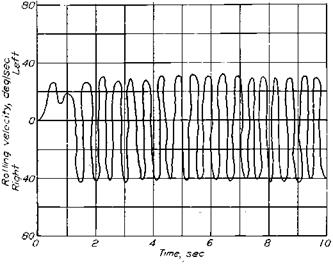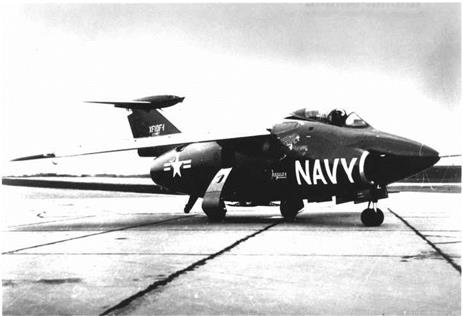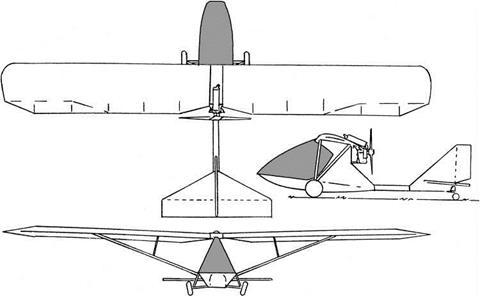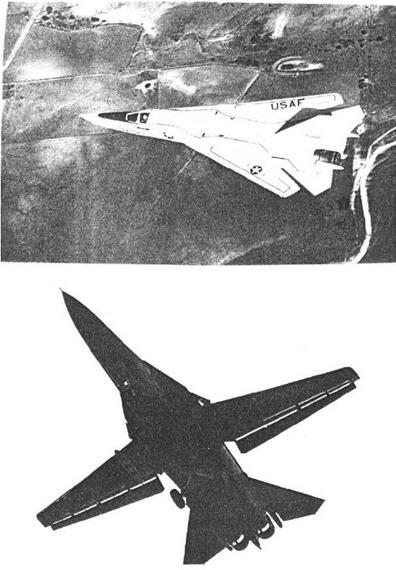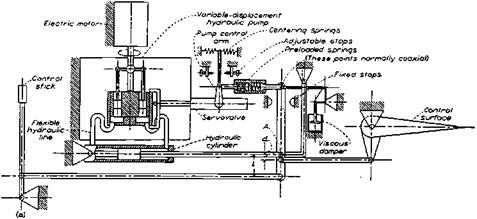The U. S. Military Services Follow NACA’s Lead
Following NACA’s lead, both the U. S. Air Force and the U. S. Navy Bureau of Aeronautics issued flying qualities specifications for their airplanes. Indeed, after the war, the allies discovered that the Germans had established military flying qualities requirements at about the same time. In April 1945 the U. S. Air Force and Navy coordinated their requirements, recognizing that some manufacturers supplied airplanes to both services. The coordinated Air Force specification got the number R-1815-A; the corresponding Navy document was SR-119A. In 1948 the final step was taken and the services put out a joint military flying qualities specification, MIL-F-8785. This document went through many subsequent revisions, the most significant of which was the 1969 MIL-F-8785B(ASG).
The main difference between Gilruth’s NACA requirements and the military versions was in the detailed distinctions made by the military among different types of aircraft. For example, in the military version, maneuvering control force, the so-called stick force per g, was generalized to apply to airplanes with any design limit load factor. NACA had recognized only two force levels, for small airplanes with stick controls and for large ones with wheel controls. Special requirements were given in the joint specification for aircraft meant to fly from naval aircraft carriers. MIL-F-8785 and its revisions were incorporated into the procurement specifications of almost all military aircraft after 1948.
The transformation of one particular flying qualities requirement from the original NACA or Gilruth version through successive military specifications can be traced (Westbrook and McRuer, 1959). This requirement is for the longitudinal short-period oscillation. The longitudinal short period is a relatively rapid oscillation of angle of attack and pitch attitude at relatively constant airspeed. The original NACA requirement applies to the stick-free case only, as follows:
When elevator control is deflected and released quickly, the subsequent variation of normal acceleration and elevator angle should have completely disappeared after one cycle.
Gilruth (1943) goes on to give reasons for this requirement, as follows:
The requirement specifies the degree of damping required of the short-period oscillation with controls free. A high degree of damping is required because of the short period of the motion. With airplanes having less damping than that specified, the oscillation is excited by gusts, thereby accentuating their effect and producing unsatisfactory rough-air characteristics. The ratio of control friction to air forces is such that damping is generally reduced at high speeds. When the oscillation appears at high speeds as in dives and dive pull-outs, it is, of course, very objectionable because of the accelerations involved.
The first U. S. Air Force specification, C-1815, relaxed the NACA requirement, allowing complete damping in two cycles instead of one. This was done because opinions collected from Air Force pilots and engineers were that the response with the stick fixed was always satisfactory, and so the short-period oscillation was of no importance in design. However, by the time of a 1945 revised specification, R-1815-A, further experience led back to the original NACA requirement of complete damping for the stick-free case in one cycle. A refinement to an analytically more correct form, one better suited for design and flight testing, was made in the next revision, R-1815-B. This is damping to 1/10 amplitude in one cycle, corresponding to a dimensionless damping ratio of 0.367.
Modern design trends, especially higher operating altitudes and wing loadings, decreased the damping in the stick-fixed case, while with irreversible controls the stick-free case essentially disappeared. When the initial stick-fixed damping requirements were set, in MIL – F-8785, the level was set at a damping ratio of 0.110, or damping to a half-amplitude in one cycle. This relatively low damping requirement is based on NACA experience with research airplanes, whose pilots seem agreeable to low damping levels. As service experience was gained with high-altitude, dense airplanes the trend was reversed and damping requirements were increased again.
This uncertainty in the desirable level of longitudinal short-period damping was typical of what led to ambitious, reasonably well-funded Air Force and Navy research programs to rationalize the flying qualities data base. In the United States, flying qualities flight and ground simulator testing went on all over the country, especially at the NACA laboratories, the Cornell Aeronautical Laboratory, Systems Technology, Inc., NATC Patuxent River, Wright Field, and at Princeton University. British, German, Dutch, and French laboratories also became active in flying qualities research at this time.
Under U. S. Air Force sponsorship, the Cornell Aeronautical Laboratory used a variable – stability jet fighter to make a systematic attack on the longitudinal short-period damping question. Robert P. Harper and Charles R. Chalk ran experiments with variations in short – period damping and frequency at constant levels of stick force and displacement per unit normal acceleration. They found a “bull’s-eye” of good damping and natural frequency combinations, surrounded by regions of acceptable to poor performance.
This and similar efforts went into successive revisions of MIL-F-8785, reaching at last the “C” revision ofNovember 1980. All along, the specification writers were guided by peer reviews and conferences involving specification users in the industry. At one point, the U. S. Navy Bureau of Aeronautics requested Systems Technology, Inc. to search for weaknesses in the specification. The resultant report (Stapleford, 1970) was issued with the attentiongetting title, “Outsmarting MIL-F-8785(ASG)” Good summaries of the revision work may be found in Chalk (1969) and Ashkenas (1973).











